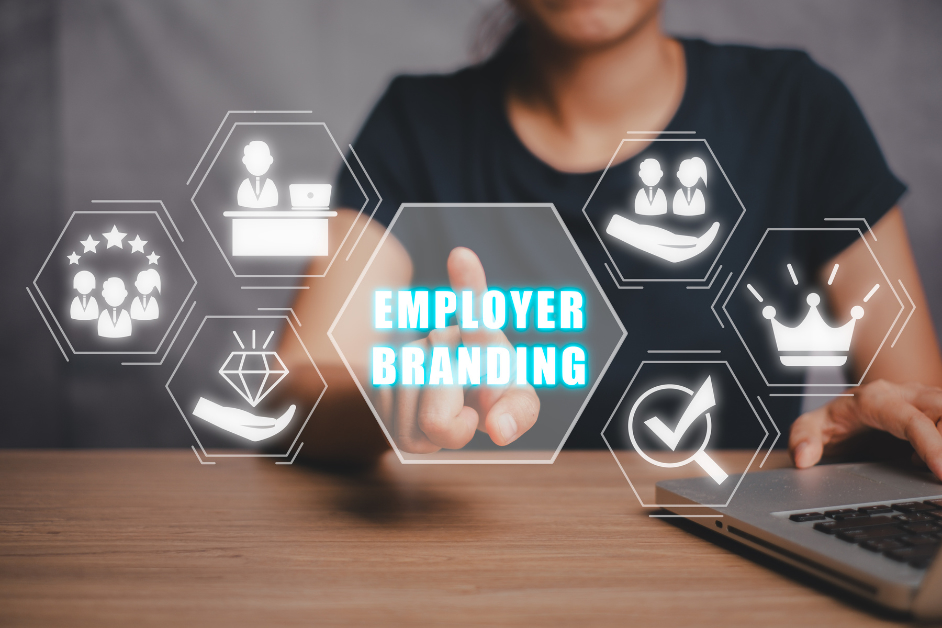With 52% of applicants turning down an attractive job offer due to a poor experience in the selection process, the question is no longer whether candidate experience is important. Rather, it is how long companies can afford to ignore it.
Recruiting used to be a linear process: advertise the job, conduct interviews and hire. But those days are long gone. Today, it's more like a journey – with many detours, stopovers and the constant risk that promising talent will change direction along the way. That's because candidates have more choices than ever before. And they're making use of them – at the latest when the first contact is bumpy, feedback is lacking or there is no sign of appreciation in the process.
Companies that focus on efficiency rather than experience at this point not only lose candidates, but also trust. The digital comparability of employers ensures that every bad experience is multiplied. At the same time, new expectations arise: equal dialogue, transparent processes, structured procedures – across every touchpoint.
The good news is that candidate experience is controllable. And it doesn't start with the signing of the contract. It begins with the first click – and ends long after the first day of work. Those who fail to consistently shape this journey lose this potential. Those who consciously shape it, on the other hand, gain more than just good applicants: namely, commitment, loyalty and a long-term cultural fit (BCG 2023).
Major break points in the candidate journey and how to bridge them
The candidate experience rarely fails because of individual decisions. It fails in between. At moments when no one feels responsible. With emails that arrive too late. With feedback that never comes. And with touchpoints that don't fit together.
Many companies are now investing in employer branding, career websites and modern application tools. But when the first personal contact stalls or processes seem delayed, one thing above all else remains: disappointment. According to Foxio Consulting, the highest dropout rates do not occur at the beginning or end of the application process – but in the middle, especially between the interview and the offer phase. This is precisely where uncertainty arises because nothing happens.
A key weakness is a lack of consistency. If you come across as approachable on LinkedIn but act formally during the interview process, you create a disconnect. If you promise speed but delay feedback, you disappoint expectations. And if you actively approach candidates but don't give them time to ask questions, you come across as arbitrary.
So it's not about more communication – it's about the right communication. The right tone. The right timing. The right touchpoints. It also starts with a clear division of roles in the process: who provides information? Who makes decisions? Who accompanies the candidates through the process? And it ends with the ability to distinguish speed from hecticness, but rather with structure.
Companies that understand this control perception, show attitude and turn applicants into convinced ambassadors – even if they don't get the contract (Foxio 2024).
From the offer to the first day – closing the onboarding gap
Many companies congratulate themselves on a successful hire after the contract is signed. But this is often where the greatest risk begins: the phase between ‘yes’ and the actual start date. Because what is celebrated as a success can quickly turn into disappointment in the eyes of the candidate. No contact, no plan, no sense of belonging and in the end, possibly no start date.
This quiet period, often several weeks or months, is rarely actively shaped. In doing so, companies lose not only momentum but also trust. Our colleagues at alphacoders see this phase as crucial in determining whether new employees start with motivation or already distance themselves internally (alphacoders 2025). Tech talents and digitally savvy professionals, whom many medium-sized companies target, compare employer experience expectations across industries.
What is missing is strategic preboarding. Not overload, but targeted points of contact: a personal welcome message, a clearly structured start plan, a buddy system, an initial meeting with the team. Such micro-gestures create commitment and reduce the risk of cancellations after the contract has been signed.
What's more, they translate the employer's promise into a genuine relationship. Those who think through the transition from candidate status to employee role gain trust. Those who leave it to chance risk friction losses, both human and economic. Because a lack of integration costs time, resources and productivity.
Or as alphacoders puts it: "Onboarding is not a function. It's a commitment." And that commitment begins long before the first day of work.
Candidate-oriented recruiting through continuous feedback
Recruiting is therefore a dialogue – or at least it should be. Because candidate experience is created through experience. And that only becomes visible when companies ask questions, listen and take action.
Nevertheless, many companies only use feedback selectively as an optional element at the end of the process. This is also wasted potential. A continuous feedback system significantly increases the quality of hires – by up to 70% (Benomik 2025). Feedback works in both directions: it shows how applicants experience the process and reveals where optimisation is needed – before frustration arises.
This does not require complicated systems, but rather targeted questions at the right points: after the application, after interviews, after rejections – and especially after onboarding. Even a simple survey with two or three questions can be effective. The key is that feedback is taken seriously and visibly processed.
At the same time, a feedback culture demonstrates attitude. Those who ask questions openly demonstrate self-confidence. Those who actively listen show respect. And those who respond transparently provide guidance – especially in decision-making phases, which are often associated with uncertainty for applicants.
It's not about perfection, but about closeness. About dialogue on an equal footing. About the courage to also receive as an employer. Companies that consistently implement this not only create better processes. They create genuine relationships and with them, loyalty.
Candidate journey as a business KPI
The candidate experience is measurable, influenceable and economically relevant. Nevertheless, many organisations still consider it a soft topic. This is a mistake with consequences. A poorly managed candidate journey not only affects the fill rate, but also brand perception, employee retention and long-term performance.
As mentioned at the outset, the data is clear: according to BCG, more than half of applicants reject attractive offers if they have had a negative experience with the application process (2023). At the same time, around two-thirds expect swift, structured communication – regardless of industry or hierarchical level. These are not soft expectations, but hard criteria that determine market access to top talent.
Organisations that actively manage their candidate journey measure drop-off rates, time-to-response, interview lead times and satisfaction scores – not in isolation, but in context. Those who make these metrics visible recognise patterns: When do candidates drop out? Where do friction losses occur? What triggers enthusiasm?
This is about control. The ability to understand recruiting as a business activity – and to manage it just as consistently as sales or product development.
The key difference: HR departments that track the candidate journey with KPIs gain decision-making autonomy. They no longer talk in terms of impressions, but in terms of impact. And that is exactly what it takes to reach and convince relevant candidates in highly competitive markets.
Conclusion: Those who think in terms of the journey act in a relationship-oriented manner
Recruiting has long been a competition for trust. And this begins long before the contract and does not end with the first day of work. Companies that understand this do not view the candidate journey as a process. Rather, they view it as a relationship.
They consciously design touchpoints. They communicate not only faster, but also more clearly. They create not only structure, but also attitude. And they don't treat applicants as supplicants, but as equal partners in conversation. This requires the courage to change – but above all, consistency. Because those who strategically manage the candidate journey not only gain talent, but also their loyalty and motivation – critical factors for high retention and company loyalty.
Do you test analytical thinking – but fail to assess how well someone fits into the team? Then you are overlooking crucial signals. And you risk making decisions that can be costly and stressful. It is worth improving selection processes: make them valid, consistent and closely aligned with what your organisation really needs.
Feel free to contact us and let's work together to identify where your candidate journey still has untapped potential.
References
- BCG (2023): What Job Seekers Wish Employers Knew. Boston Consulting Group.
- Foxio Consulting (2024): When efficiency meets quality – the KPIs that really drive your recruiting forward.
- alphacoders (2025): From application to retention: How inclusive onboarding processes retain IT talent in the long term.
- BENOMIK (2025): Candidate experience: how feedback loops drive it forward.
Related topics
- Candidate Experience = Corporate Culture in Real Time – Why many fail
- E-recruiting meets candidate experience
- When efficiency meets quality – the KPIs that really drive your recruiting forward
- Onboarding 2.0 – because motivated developers are priceless










.png)




